#cuon alpinus
Text

🐾 25 days of agere moodboards - day 1 : fav animal


#dhole#aka#cuon alpinus#theyre really underrated#i have a lot of favorite animals but i did them cause i looovee them#25ageremoodboards#agere#agere moodboard#sfw agere#sfw regression#sfw interaction only#age dreaming#sfw age dreaming#sfw agedre#sfw littlespace
25 notes
·
View notes
Text
JTTW Chapter 36 Thoughts
Chapter 36 for the @journeythroughjourneytothewest Reading Group!
We’ve got creatures galore this time around!
Why can’t you give us the slice of life, huh? Why can’t you, the people want to read fluff too! I know I’d love to.
So as I’m attempting to keep track of the passage of time stated in the text there seems to have been a timeskip of multiple years. The changing of seasons up until last chapter only indicated around one and a half years passing, so either Tang Sanzang is exaggerating and only half a year to one year passes, so definitely one Winter since the narration mentioned frost, or it’s really been a couple of years.
Deer, deer, deer! No fallow deer, those are muntjac deer in the Chinese Original. Cute in the silliest way.

River deer basically yes, our lovely goofy Chinese Water Deer.

Now hold it! Those are not wolves! In the Chinese Original they are either Dholes or a kind of jackal. All three are in the family of Canidae. The wolf shares the Canis genus with jackals, while dholes and jackals are of the same tribe Canini.
I’m leaning more towards Cuon Alpinus so Dholes, which range throughout Asia and are also called Red Wolf or Mountain Wolf, but that might also be personal bias for I watched the Wild Kratts episode on them.

They are really social even more so than wolves and just overall very sweet. However they are classed as endangered!
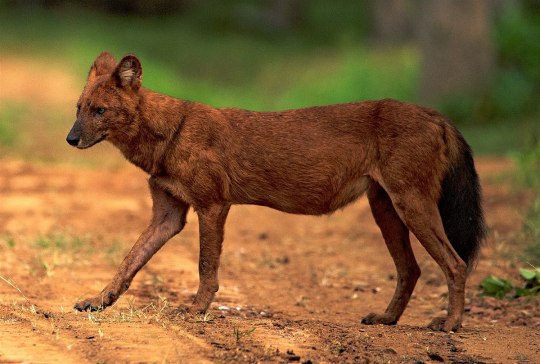
They also come in a fluffy variant.

Jackals are really neat too though, here it might specifically be the Canis Aureus commonly known as Golden Jackal, which are native to Eurasia.
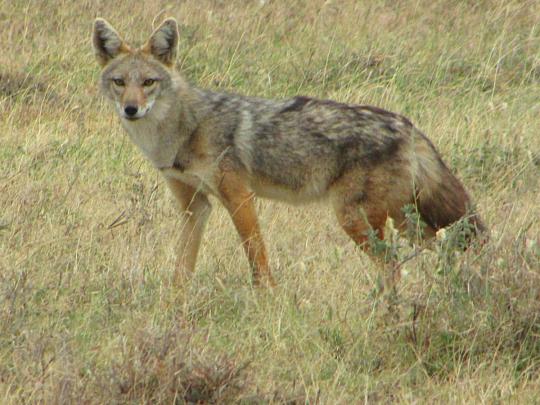
From Anthony C. Yu’s notes I concur the Vajra-guardians definitely do not look like cherubs neither the modern version nor the biblically accurate one. But they might be somewhat similar in function! Cherubim are assigned to protect special places as one of their jobs, so that guardian function might be the similarity that led to the comparison.
Tang Sanzang getting pouty is so endearing, much more than any ‘scared of demon’ instance.
Though in my opinion the monastery should have been able to kick out those guys that were causing needless trouble over multiple years. Give aid to fellow people yes, but if they knowingly and wilfully act out like that they rescind their right to stay.
Again with the property damage, Sun Wukong might have already cut down on violence against people, but no door is safe from him still.
#xiyouji#journey to the west#jttw#wild kratts#sun wukong#monkey king#tang sanzang#jttw reading group#jttw book club#deer#muntjac deer#chinese water deer#dhole#Cuon Alpinus#jackal#Canis Aureus
15 notes
·
View notes
Text

Undying Tales Project Day 16: An Asiatic canid called the dhole. Once again, I didn't add any elements of the lore and just illustrated this endangered animal. The references I took this from are more from the Indian subspecies rather than the fluffier Chinese or Tibetan species. I'm not sure I did a great job of depicting this particular type of canid rather than a more generic canid. Faber-Castell brushpen, Windsor & Newton fine-line marker, and Prismacolor fine-line marker on Canson mixed media.
#Cuon alpinus#Undying Tales Project#Undying Tales 2023#UndyingTalesDay16#animal#animals#mammal#canid#dhole#Asiatic wild dog#endangered species#art#my art#sciart#October drawings#drawing#black and white#pen and ink#October drawings 2023
8 notes
·
View notes
Text
i love dhole with their winter coat it's like a new secret doggy with teddy bear ears


4 notes
·
View notes
Text
Dholes and Jackals


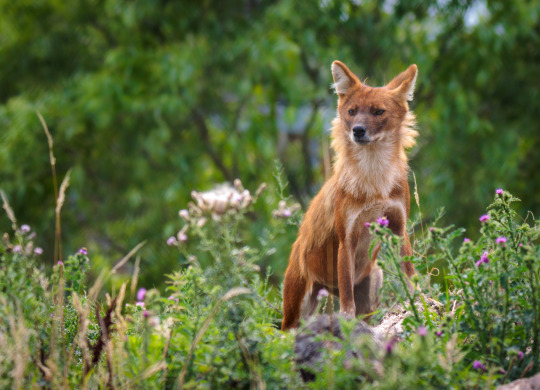




#Ziezoo#ziezoovolkel#Photography#Photo#Zoophotography#canon#eos#zoo#animal#animals#animalphotography#Dhole#asiatic#red#dog#cuon#alpinus#reddog#asiaticreddog#canine#dogs#dholes#Jackal#Canis#jackals
3 notes
·
View notes
Photo
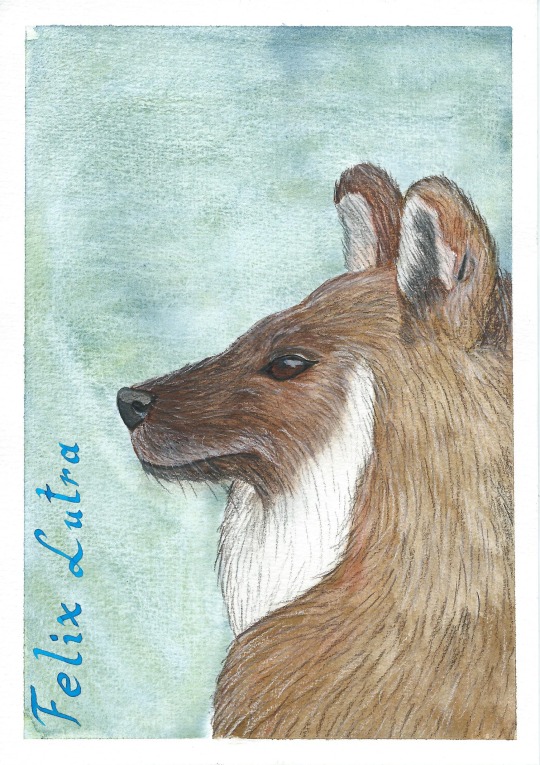
#Cuon#alpinus#adjak#rothund#handpainted#traditional art#traditional drawing#art#artwork#felix#felixlutra#lutra#aquarelle#aquarelle painting#watercolor#watercolour#colored pencil#colored pencil art#colored pencil drawing
1 note
·
View note
Note
🥚 thank you for introducing us to so many wonderful animals
Of course

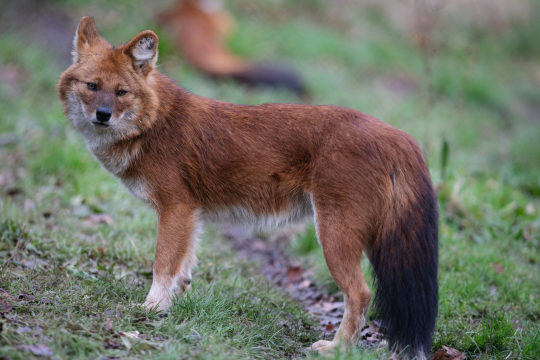
Dhole!
(Cuon alpinus)
262 notes
·
View notes
Text

Indian dhole (Cuon alpinus dukhunensis)
Photo © Suru Nair
370 notes
·
View notes
Text
My thoughts of the new Minecraft wolf variants!
With the recent announcement of the new wolf variants, I wanted to give my two bits about what real life animal each of the variants are based on! (I study animal ecology so I get excited when animals are depicted in anywhere)
The Pale Wolf, Black Wolf, Snowy Wolf, Ashen Wolf, and Woods Wolf
All of these wolf variants are based on the Grey Wolf (Canis lupus), whether it be the typical Plains Wolf (Canis lupus nubilus), or a different subspecies. The Grey Wolf is the most common wolf species found on the world, typically lives in packs of 4-9 members, and typically has 5 accepted subspecies in the science community - but in total has over 30 subspecies (determining subspecies can be tricky).

The Pale Wolf is specifically meant to represent a Plains Wolf, as this design has been representing the Grey Wolf in Minecraft for at least 12 years. The Taiga biome is one of the biomes where Grey Wolves can be found, making it a great place to find Pale Wolves in Minecraft.

The Black Wolf is not a subspecies, but rather a color variant of the Gray Wolf. The black coloring of their coats is not typically caused by melanism, but rather is a normal gene found in Grey Wolves. One of the causes of wolves having a black coat is due to the black gene being linked to higher immunity to canine distemper, meaning the black wolves that survive the virus are able to reproduce and pass on their black genes. Does this mean distemper exists in Minecraft? Probably not, but that's up to your interpretation.

The Snowy Wolf is based on the Arctic Wolf (Canis lupus arctos). Artic wolves' white coats help them blend into the snow to help them hunt prey, and to hide them from potential predators.
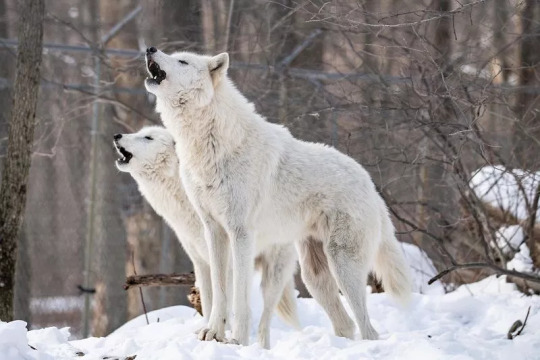
The Ashen Wolf is likely based on the Eurasian Wolf (Canis lupus lupus). The Eurasian wolf can have similar coloring to the plains wolf, but has also been found with greyer coloring along its back, tail, and upper legs and face, and with white on its cheeks, underbelly and lower legs.
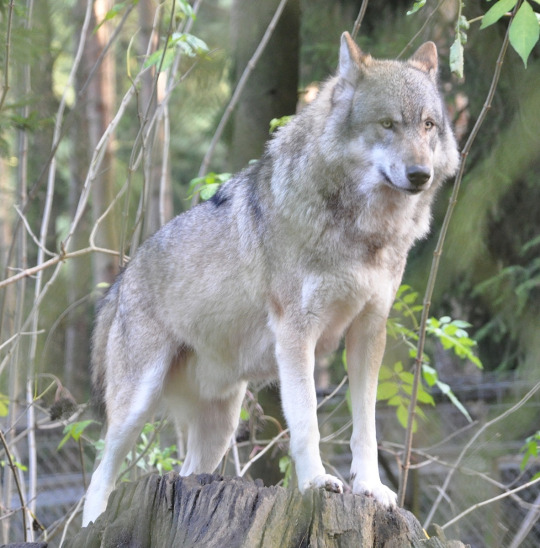
I think that the Woods Wolf is based on the Tibetan/Himalayan Wolf (Canis lupus chanco). It was a challenge to find what subspecies the woods wolf was based on because most wolves don't have the deep brown-orange coloring seen on the woods wolf, but the Tibetan/Himalayan wolf can often be seen with these colorings in the wild.
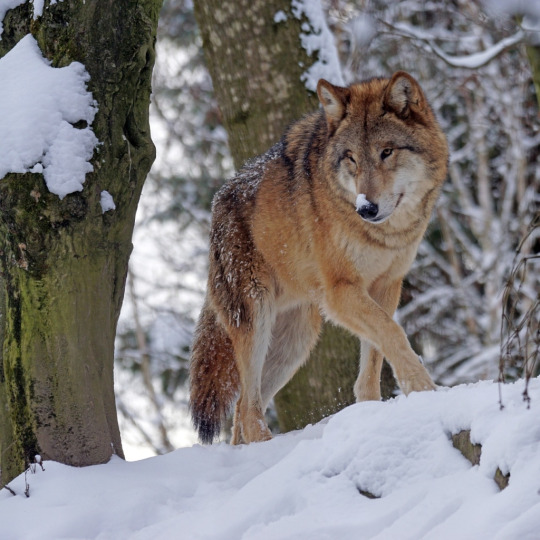
The Rusty Wolf
The Rusty Wolf is based on the Dhole (Cuon alpinus), also known as the Asiatic Wild Dog. Dholes have a rich tawny coat with a rich chocolatey tail. Unlike another popular red canine (the dingo), Dholes live in tropic forests, rainforests, and other habitats, making it an appropriate fit to be the jungle dwelling rusty wolf.

The Spotted Wolf
The Spotted Wolf is based on the African Wild Dog (Lycaon pictus), also known as the Painted Dog or the Cape Hunting Dog. This is variant is my favorite of the variants, and is one of my favorite canines of all time. African wild dogs live in savannah and grasslands biomes irl, and have beautiful coats ranging in different patterns of tawny, black, and white. I don't know if this is possible for Minecraft mechanics, but hopefully the spotted wolves will have different coat variants like their irl counterparts.

The Striped Wolf
The Striped Wolf is based on the Aardwolf (Proteles cristata), which is a species of hyena, making them felids instead of canids! (Yes, hyenas are more closely related to cats than dogs). Aardwolves can be found in semi-arid and open plains, making the badlands a good place to find them in-game. Fun fact! Aardwolves mainly eat termites/ants. Hopefully the striped wolf won't starve in a "bugless" game (rip fireflies).
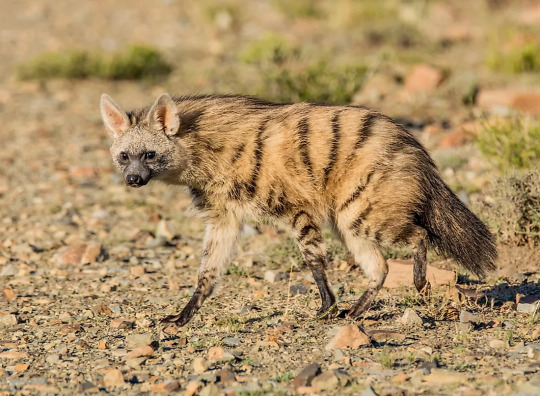
The Chestnut Wolf
This one frustrates me. I couldn't find a canine or canine adjacent animal that had even a similar coat pattern. This is not a wolf. It is a dog. Probably a Norwegian Elkhound.

#minecraft#minecraft wolf#minecraft wolves#wolf#wolves#grey wolf#dhole#african wild dog#aardwolf#norwegian elkhound#zoology#animal ecology
61 notes
·
View notes
Text
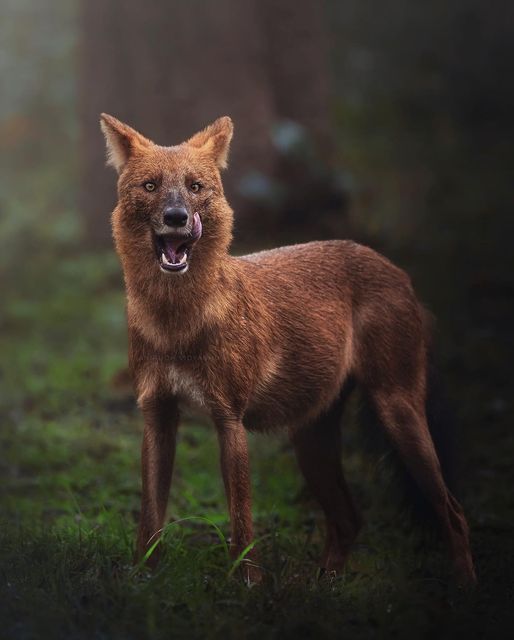
Asiatic Wild Dog aka Dhole (Cuon alpinus), family Canidae, Kabini Forest, southern India
photograph by @anirudh__vidyabhushan
82 notes
·
View notes
Text
What canine are the new wolf variants based of?
I am possibly wrong at points and also do not know every canine ever. Also an argument can be made that all of them bar Spotted and Stripped are based of natural variation of Grey wolves (or Coyotes). (But that makes a very dull post so where possible I will be avoiding them.)

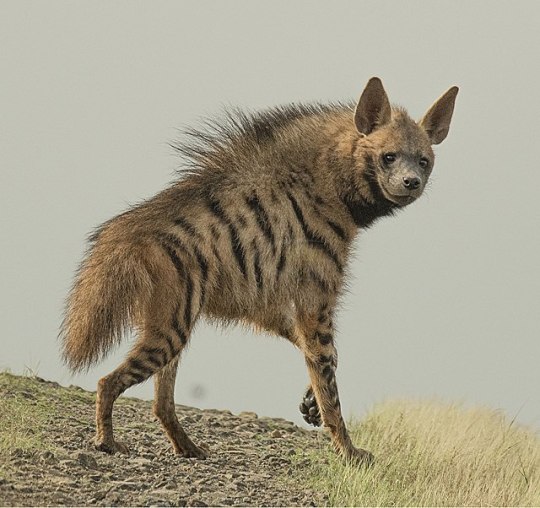
Stripped wolf: Wooded Badlands, Striped Hyena (Hyaena hyaena)


Spotted Wolf: Savanna Plateau, African Wild Dog (Lycaon pictus)

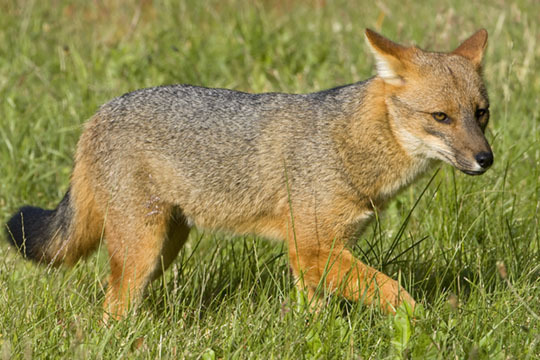
Woods Wolf: Snowy Taiga, Culpeo (Lycalopex culpaeus) Arguably too pale a brown.



Rusty Wolf: Sparse Jungle, Dhole (Cuon alpinus) (or Ethiopian Wolf (Canis simensis) which looks closer but the habitat is wrong)


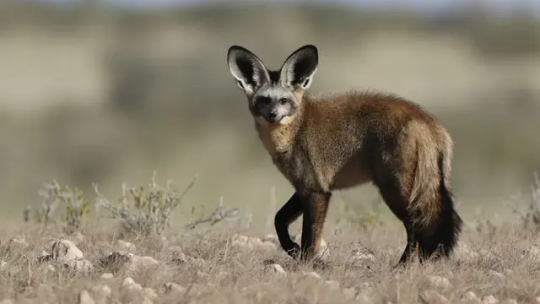
Chestnut Wolf: Old Growth Spruce Taiga, Side Stripped Jackel (Lupulella adustus) (or Bat Eared Fox (Otocyon megalotis))


Black Wolf, Old Growth Pine Taiga, Grey Wolf (Canis lupus)


Ashen Wolf: Snowy Taiga, Grey Wolf (Canis lupus)

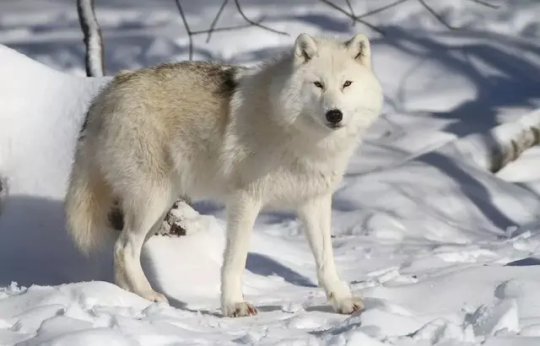
Snowy Wolf: Grove, Arctic Wolf (Canis lupus arctos) [Technically a subspecies of the grey wolf]
#minecraft#minecraft mobs#minecraft wolf#minecraft 1.20#Its an excuess to talk about caines:)#I love them#African wild dogs my beloved
47 notes
·
View notes
Text
I just learned about this dhole (Cuon alpinus) plushie Kickstarter! It needs US$ 7,900 by Sun, April 21 2024 10:49 PM UTC +03:00!
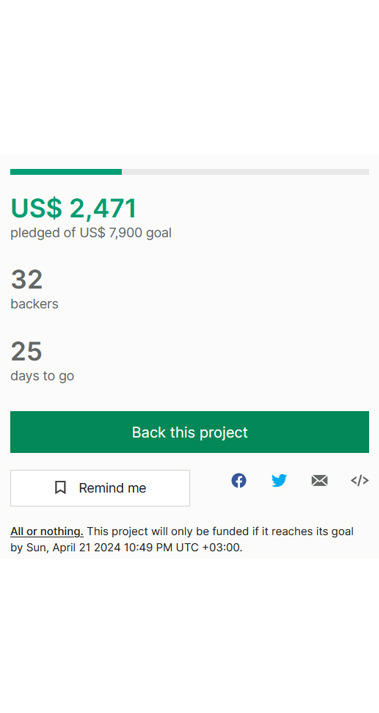

>Link to Kickstarter<
22 notes
·
View notes
Text
pit babe daemons
I'm physically incapable of being in a fandom without making a daemon au. I'm not exactly actively writing this, but I couldn't stop thinking about it so here we are. (also it's always a fun test of my willpower to not give everyone a bird. 2/13 I am a master of restraint.)
(warning for spiders and snakes just in case!)
Babe:
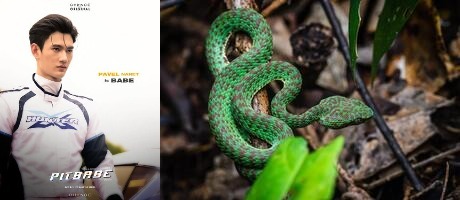
beautiful pit viper (trimeresurus venustus) (I couldn't resist). like most snakes, scary on the outside and a sweetheart underneath. not the most aggressive but strikes fast with a venomous bite. also imagine Babe in his tank top with a snake draped over his neck. exactly.
charlie:

Appenzeller Sennenhund. cheerful, energetic, smart. fearless when it comes to protecting their family. very loyal! of course puppy Charlie has a dog daemon.
Way:

eastern barn owl (Tyto javanica stertens). fiercely territorial, secretive. incredible hunter. intelligent! also in folklore owls are either good (symbol of wisdom) or bad (omen of death and doom to come) which speaks to the dichotomy of Way.
Pete:

spotted-winged fruit bat (Balionycteris maculata). tends to be solitary. not a predator. they don’t echolocate but find food using keen sense of smell and eyesight, and they have an unusual dental formation compared to other fruit bats. (<- I can't explain why that is Pete to me but trust me.) smallest of the megabats but still a megabat which I think reflects the corporate side of things nicely.
Kenta:

cocker spaniel. loyal loyal loyal. easily trained. meant for hunting. good with kids lol. also in HDM servants tended to have dog daemons. LOYAL.
Kim:

siberian weasel (Mustela sibirica). intrepid and intelligent. sociable when it suits. will fight you and likely bite you. look at that little lady and tell me that's not Kim.
North:

dhole (Cuon alpinus). highly sociable and adaptive. noisy (likes to chat) but also uses complex body language. dholes don't engage in dominance displays and aren't super territorial, which I think reflects North's easy-going nature.
Sonic:

blue crested lizard (Calotes mystaceus). colourful! not very dangerous but still has teeth and claws. quick and crafty. I originally thought butterfly for Sonic but he needed something more substantial. also she definitely hitches a ride on North's daemon all the time.
Dean:

tiger shrike (Lanius tigrinus). solitary, shy and predatory. shrikes kill by impaling their prey on the nearest pointy object, which I think mirrors the way Dean went for the hammer well. also not a particularly flashy bird. (but still beautiful in the way all birds are beautiful!!)
Winner:
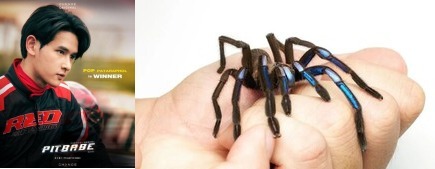
electric blue tarantula (Chilobrachys natanicharum). opportunistic, defensive, kind of a show-off. will ‘hiss’ when provoked. but not the most dangerous spider around. also I think Winner deserves a little blue in his life.
Alan:

banded linsang (Prionodon linsang) male daemon - low sexual dimorphism in this species so not everyone notices but it’s just something else that pings a little odd about alan. generally solitary and not well-known. a predator still.
Jeff:

veined labyrinth butterfy (Neope pulaha). clever, excellent vision, weak fliers. Jeff is a mystery to most, hence labyrinth. I think Jeff is served well by a daemon that can be easily hidden and/or overlooked.
+ bonus Tony:
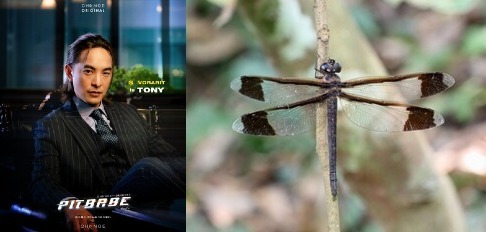
giant hawker dragonfly (Tetracanthagyna plagiata). dragonflies are the world’s most efficient predator. but at the end of the day it’s just an insect. as with Jeff, it suits Tony to have a hidden daemon.
#pit babe#fic ideas#not me finishing all my research and then realising I’d forgotten about alan and jeff my bad!!#daemon au is obviously still omegaverse#I don't think daemons have a dynamic as such beyond what their connection to their person is#did I spend 2 hours on this instead of finishing my winnerdean fic? perhaps. don't look at me.#I did give all their daemons names as well but maybe I'll save them for the actual fic
8 notes
·
View notes
Text
Cuon Alpinus
Of the canidae family, the dhole (pronounced dole), also known as the Indian wild dog, is an endangered wild dog found throughout much of Asia, although they used to occupy half the globe. Their diet consists mostly of hoofed mammals (chital and sambar deer in particular) that they hunt as a pack, but they also commonly eat berries, lizards, bugs, and smaller prey. Their pack consists of 5-12 members, but they sometimes play and hunt with other dhole packs. These packs join together for a while, hunting together, sharing food, and playing, and then split off into the smaller groups again. Around January and February, dholes have large litters of pups born in burrows with multiple entrances. These dens can grow very large and are oftentimes used by many generations of dholes. They can even have six entrances which can lead to around 100 feet of interconnected tunnels. Usually their litters consist of 5-10 pups but occasionally there are as many as 12-16.
Photo by Bobby Jo Clow

Dholes are known for their agility. They are powerful hunters with their running, swimming, jumping, and even climbing abilities. They can jump a shocking 7 feet vertically into the air and run for long periods of time. Along with impressive athletic abilities they have expansive means of communicating, like a complex body language. Chirping, whistling, and mewing along with whines, squeaks, screams, and chattering are some of the many ways they communicate with each other. From videos I’ve watched of them they sound rather a lot like birds or monkeys. For communicating over long distances they make a loud whistling sound, which is why they are also called whistling dogs. Their whistles are short medium-high pitch sounds. These whistles carry through dense brush easily, helping them stay together and hunt in a more coordinated manner when they can’t see each other. When the animals they hunt are scarce they will target livestock, causing people to target them. This along with habitat loss has endangered the dhole and there are now fewer than 2,500 adults left in the wild.
Overall, I rate the dhole 10/10. Very cool dog. Needs more attention from the world



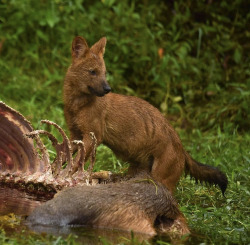
138 notes
·
View notes
Photo

I just realized that this generation hardly knows about the dholes. So that’s why I created Dhole in the first place. Dholes are endangered due to habitat loss. Their scientific name is Cuon Alpinus. Dholes are only about the size of a border collie. They are 3 feet in length and 20 inches tall at the shoulder. Their tail is 15 to 18 inches long. Males are slightly larger and heavier than females. Dholes like open spaces and can often be found on jungle roads, river beds, jungle clearings, and paths, where they rest during the day. Their hunting range is about 40sq km (15sq mi). The dhole can also be found in dense forest steppes, and the thick jungles of the plains as well as the hills. Dholes, like other dogs, are social and live in a group called a pack. Just like dogs you may know, dholes happily wag their tails at one another in greeting! The pack works together to feed and care for itself. Each pack has 5 to 12 members, but its members also work or play with dholes from outside of their own pack.
The dhole is a canid native to Central, South, East Asia, and Southeast Asia. In Central Asia, they primarily inhabit mountainous areas, whereas in India, Myanmar, China and Indonesia they prefer forested areas in alpine regions. Just know that I really like to drop random infos here. I hope this can teach you something. (Dhole was originally design to be a character that is not known to most people. He was supposed to be a dingo but I changed it to dhole because this is South East Asia!)
Art by me
#my art#sans#dhole!sans#dhole#my OC#cittys art#WOOOOOOOOOOOO#I haven't drawn my boi for like a year#he can change into a dhole anytime he wants#;)#citty rambles
7 notes
·
View notes
Text
Species: Wolf-like Canids (Cuon, Lycaon, Lupulella)
This series focuses on helping people choose interesting species for their fursona through informing them of the many, often overlooked, species out there! This post is about wolf-like canids.
──── ◉ ────
Species:
Dhole (Cuon alpinus)
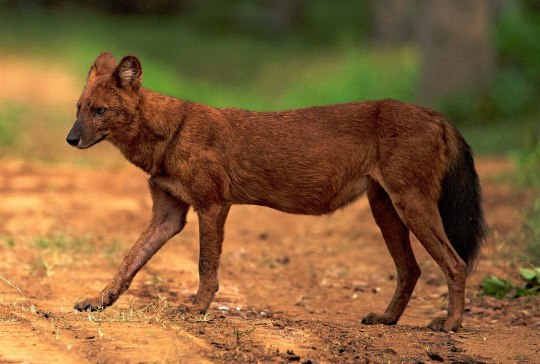
Size: 50cm (19in) height (at shoulder), 90cm (35in) lenght, 45cm (17in) tail lenght, 10-21kg (22-46lbs) weight
Diet: carnivorous, preys on ungulates
Habitat: alpine meadows, montane steppes, montane taigas, forests
Range:
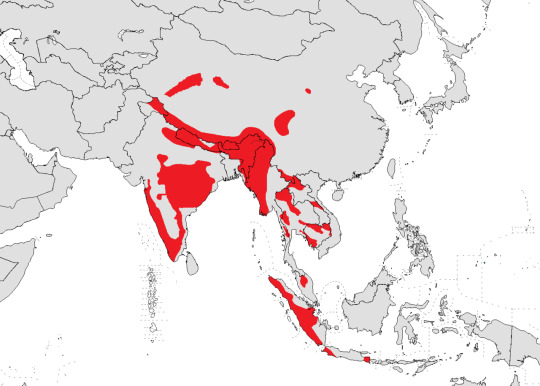
Status: endangered
Please note! The dhole has 7 subspecies!
Of which I would like to highlight:
Ussuri Dhole (Cuon alpinus alpinus)

Cuon alpinus lepturus

──── ◉ ────
African Wild Dog (Lycaon pictus)

Size: 60-75cm (24-30in) height (at shoulder), 71-112cm (28-44in) lenght, 29-41cm (11-16in) tail lenght, 18-25kg (40-55lbs) weight
Diet: carnivorous, preys on ungulates
Habitat: savannah
Range:

Status: endangered
──── ◉ ────
Side-Striped Jackal (Lupulella adusta)

Size: 35-50cm (14-20in) height (at shoulder), 69-81cm (27-32in) lenght, 30-41cm (12-16in) tail lenght, 6.5-14kg (14-31lbs) weight
Diet: omnivore, viaried. Preys on small mammals, invertebrates; eats fruit.
Habitat: woodlands, scrublands
Range:

Status: least concern
Please note! The side-striped jackal has 7 subspecies!
──── ◉ ────
Black-Backed Jackal (Lupulella mesomelas)
The black-backed jackal has 2 subspecies:
Cape Black-Backed Jackal (Lupulella mesomelas mesomelas)
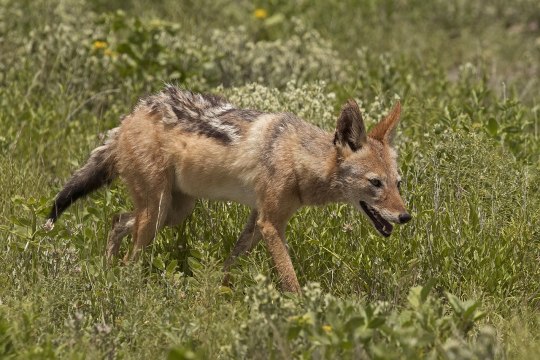
East African Black-Backed Jackal (Lupulella mesomelas schmidti)

Size: 38-48cm (15-19in) height (at shoulder), 67-81cm (26-32in) lenght, 6-13kg (13-29lbs) weight
Diet: omnivore, preys on small mammals, invertebrates, birds, reptiles, fish; eats carrion, berries
Habitat: varied; coastal deserts, savannahs
Range:

Status: least concern
──── ◉ ────
#fursona resources#furry#fursona#mammals#canidae#canids#cuon#lycaon#lupulella#dhole#african wild dog#jackal#side-striped jackal#black-backed jackal#species
2 notes
·
View notes